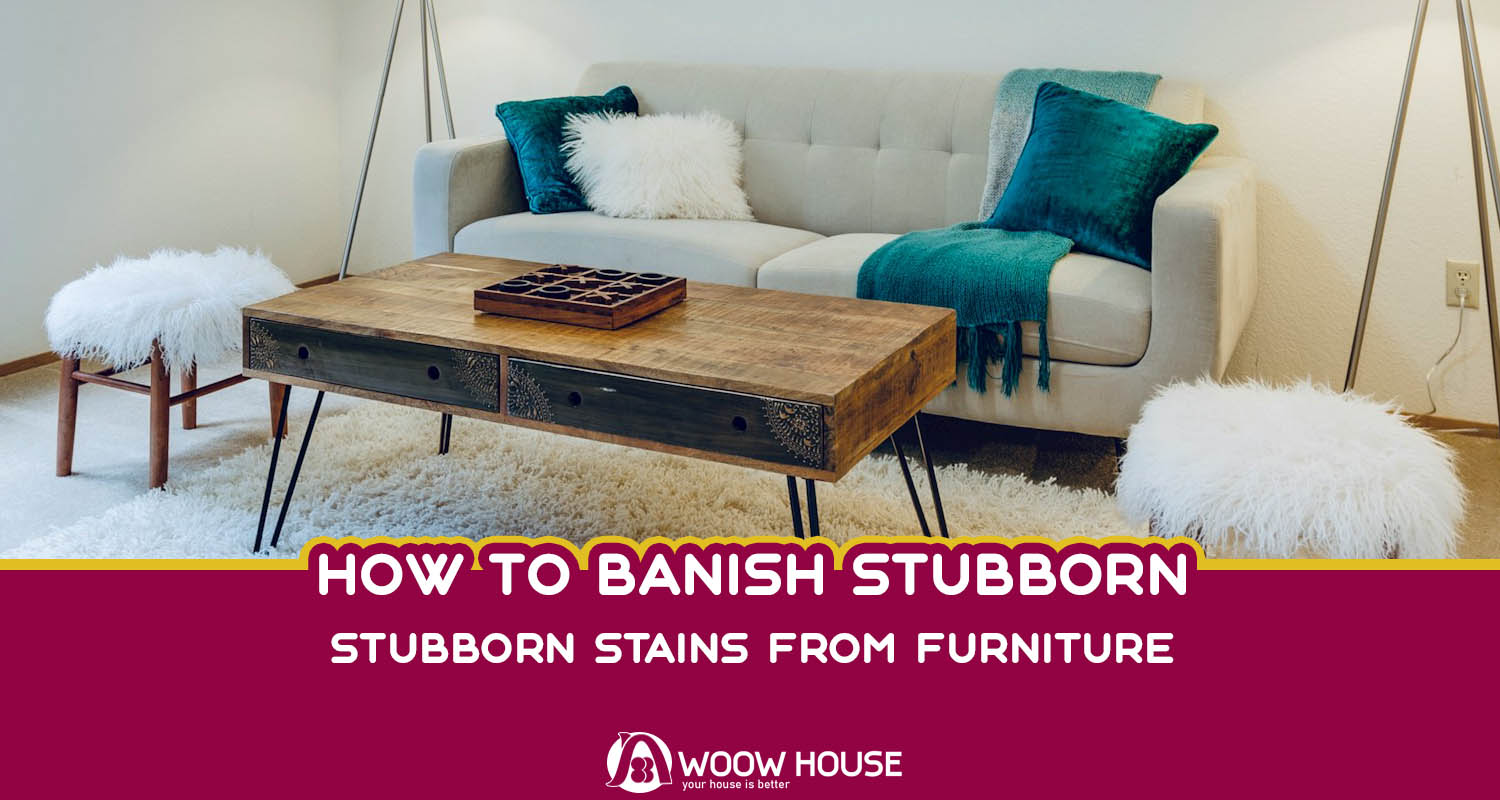Furniture is an essential part of our homes, providing comfort, functionality, and style. However, over time, furniture can become stained and soiled, detracting from its appearance and appeal. Whether it’s a spilled drink, a pet accident, or everyday wear and tear, dealing with stubborn stains on furniture can be a frustrating challenge. Fortunately, with the right techniques and products, many stains can be effectively removed, restoring your furniture to its former glory. In this comprehensive guide, we’ll explore a variety of tips and techniques for banishing stubborn stains from furniture and reclaiming its beauty.
Assess the Stain:
Before attempting to remove a stain from furniture, it’s essential to assess the type of stain and the material of the furniture. Different stains may require different treatment methods, and certain cleaning products or techniques may be more suitable for specific types of fabric or upholstery. Common types of stains on furniture include food and beverage spills, pet stains, grease and oil stains, ink stains, and watermarks. Once you’ve identified the type of stain and the material of the furniture, you can choose the appropriate cleaning method.
Act Quickly:
To increase the likelihood of successfully removing a stain from furniture, it’s essential to act quickly. As soon as a spill or accident occurs, blot the affected area with a clean, absorbent cloth or paper towel to soak up as much of the liquid as possible. Avoid rubbing the stain, as this can spread it further and embed it deeper into the fabric. For solid or semi-solid stains, gently scrape off any excess material with a spoon or dull knife before treating the stain.
Test Cleaning Products:
Before applying any cleaning products to your furniture, it’s important to test them in an inconspicuous area to ensure they won’t cause damage or discoloration. Choose a small, hidden spot on the furniture, such as the back or underside, and apply a small amount of the cleaning product using a clean cloth or sponge. Allow the product to sit for a few minutes, then blot it away with a clean, damp cloth. Check the test area for any adverse reactions, such as color fading or fabric damage, before proceeding with cleaning the entire stain.
Use Gentle Cleaning Solutions:
When treating stains on furniture, it’s best to start with gentle cleaning solutions and gradually escalate to stronger products if necessary. For water-based stains such as coffee, tea, or juice, mix a solution of mild dish soap and water and apply it to the stain using a clean cloth or sponge. Blot the stain gently, working from the outside in to prevent spreading. For oil-based stains such as grease or food spills, try using a solvent-based cleaner or upholstery shampoo designed specifically for oil-based stains.
Consider Natural Remedies:
For eco-friendly and budget-friendly stain removal, consider using natural remedies and household ingredients to tackle stubborn stains on furniture. Vinegar, baking soda, and hydrogen peroxide are all effective natural cleaners that can help lift stains and neutralize odors. Mix equal parts white vinegar and water to create a mild cleaning solution for water-based stains. Sprinkle baking soda over oil-based stains and let it sit for several hours before vacuuming it away. For tough stains, mix hydrogen peroxide with a few drops of dish soap and apply it to the stain before blotting it away with a clean cloth.
Steam Clean Upholstery:
For deep cleaning and sanitizing upholstered furniture, consider using a steam cleaner. Steam cleaning effectively penetrates fabric fibers to lift dirt, stains, and odors without the need for harsh chemicals. Follow the manufacturer’s instructions for operating the steam cleaner and use the appropriate attachments for upholstery cleaning. Start by vacuuming the furniture to remove loose dirt and debris, then steam clean the upholstery in small sections, working from top to bottom. Allow the furniture to dry thoroughly before using it again.
Spot Treat Stubborn Stains:
For particularly stubborn stains that resist traditional cleaning methods, spot treatment may be necessary. Spot treatment involves applying a concentrated cleaning solution directly to the stain and allowing it to sit for an extended period before blotting it away. Commercial stain removers and pre-treatment sprays are available for specific types of stains, such as ink or pet stains. Apply the spot treatment according to the manufacturer’s instructions, then use a clean cloth or sponge to blot away the stain. Repeat the process as needed until the stain is fully removed.
Protect and Prevent Future Stains:
Once you’ve successfully removed a stubborn stain from furniture, it’s essential to take steps to protect and prevent future stains from occurring. Consider applying a fabric protector or stain repellent to upholstered furniture to create a barrier against spills and stains. Use coasters, placemats, and trays to protect furniture surfaces from water rings and heat damage. Establish household rules for eating and drinking near furniture.
Professional Cleaning Services:
In some cases, particularly severe or set-in stains may require professional cleaning services to fully remove. Professional upholstery cleaners have the expertise, equipment, and specialized cleaning solutions necessary to tackle even the toughest stains safely and effectively. If DIY methods are unsuccessful in removing a stubborn stain, consider consulting a professional upholstery cleaner for expert assistance. Be sure to communicate the type of stain and the material of the furniture to ensure the most appropriate cleaning methods are used.
Regular Maintenance and Cleaning:
To keep furniture looking its best and prevent stains from becoming permanent, it’s important to maintain a regular cleaning and maintenance routine. Vacuum upholstered furniture regularly to remove dirt, dust, and pet hair that can accumulate over time. Wipe down wood, metal, or plastic furniture with a damp cloth or gentle cleaning solution to remove surface dirt and debris. Rotate cushions and pillows periodically to ensure even wear and prevent permanent indentations. By staying proactive with cleaning and maintenance, you can prolong the life of your furniture and keep it looking fresh and beautiful for years to come.




